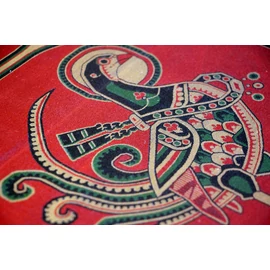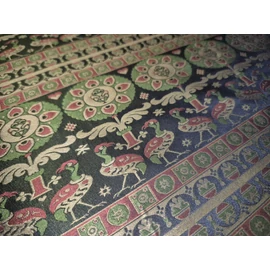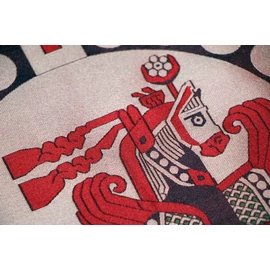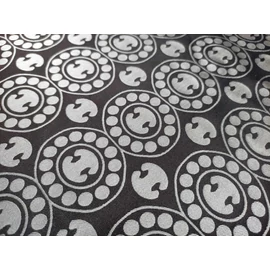Description
Reconstruction of a fascinating Sogdian textile with confronting lions and bulls. The animals were depicted in a typical Central Asian style.
Original textile from the Yale University Art Gallery
Sogdian Silks
Sogdian silks were luxurious textiles produced by the Sogdians, a vibrant mercantile people who inhabited Central Asia, particularly the region of Sogdiana (modern-day Uzbekistan and Tajikistan), between the 4th and 9th centuries CE. Renowned for their skill in weaving and dyeing, the Sogdians played a crucial role in the Silk Road trade, acting as intermediaries between China, Persia, and the Mediterranean.
Their silks were notable for intricate patterns, often featuring pearl roundels, winged horses, lions, and other motifs blending Iranian, Indian, and Chinese influences. These textiles were not only prized for their beauty and craftsmanship but also served as cultural currency, signifying status and facilitating diplomatic exchanges across empires.
Surviving fragments of Sogdian silks have been found as far afield as China and Europe, attesting to their widespread appeal and the Sogdians’ central role in the cosmopolitan world of early medieval trade.
Project requested by: Nadeem Ahmad, Eran ud Turan

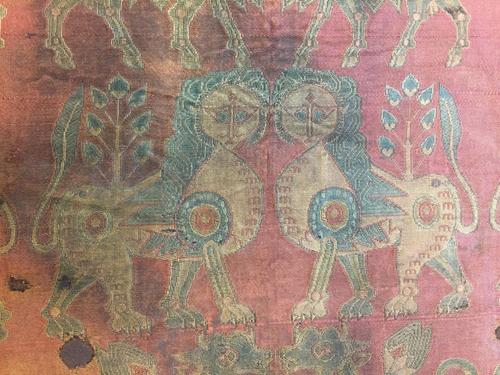
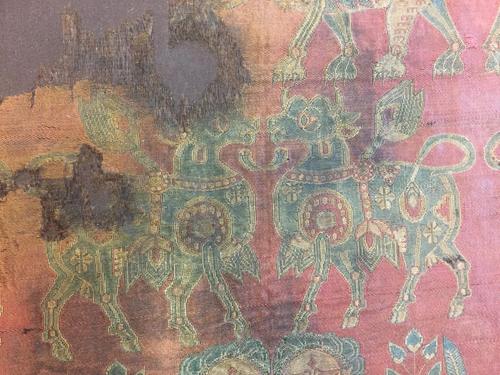
Artwork: Balázs Szakonyi
Sources:
Textile Fragment with Bulls and Lions- - Yale University Art Gallery




